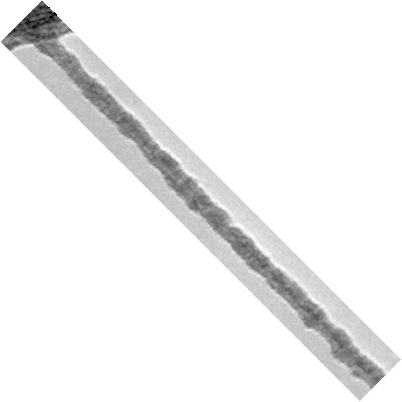Ultrathin Uniform Nanowires

Is there a limit to how thin a superconducting wire can be, while retaining its superconducting character, and, if so, what sets this limit? This issue is of both fundamental and practical importance. The possibility that quantum phase slips provide resistance at low temperatures is a subject of intense discussion. Some new theories predict that in ultrathin nanowires quantum phase ships should proliferate and drive the wire normal, while others do not.
We report the first observation of a dissipative superconductor-insulator transition at T ù 0 in ultrathin (< 10 nm) uniform nanowires made by depositing MoGe on carbon nanotubes. An example is shown in the transmission electron micrograph above. We find that wires with normal resistance below the quantum resistance h/4e2 = 6.5 kW become superconducting, while those with higher resistance do not.
Michael Tinkham
Harvard MRSEC (DMR-0820484)
